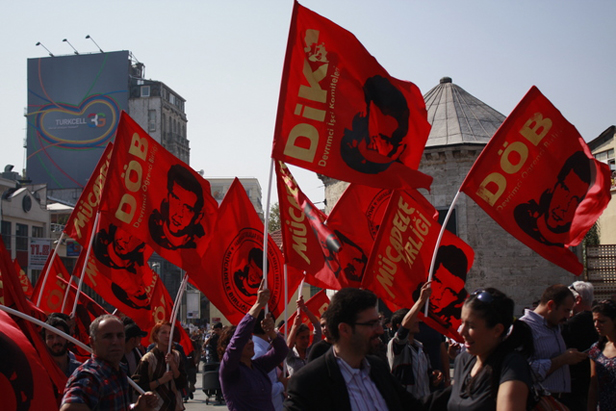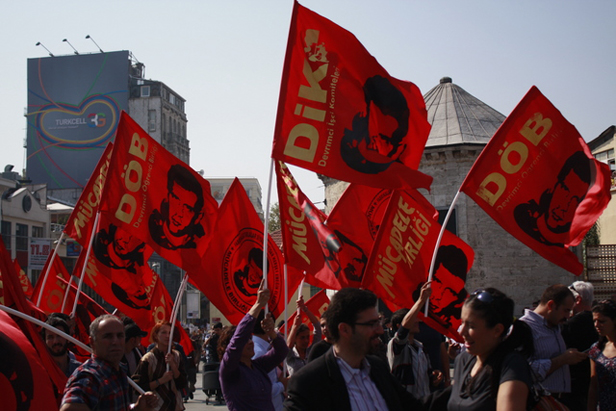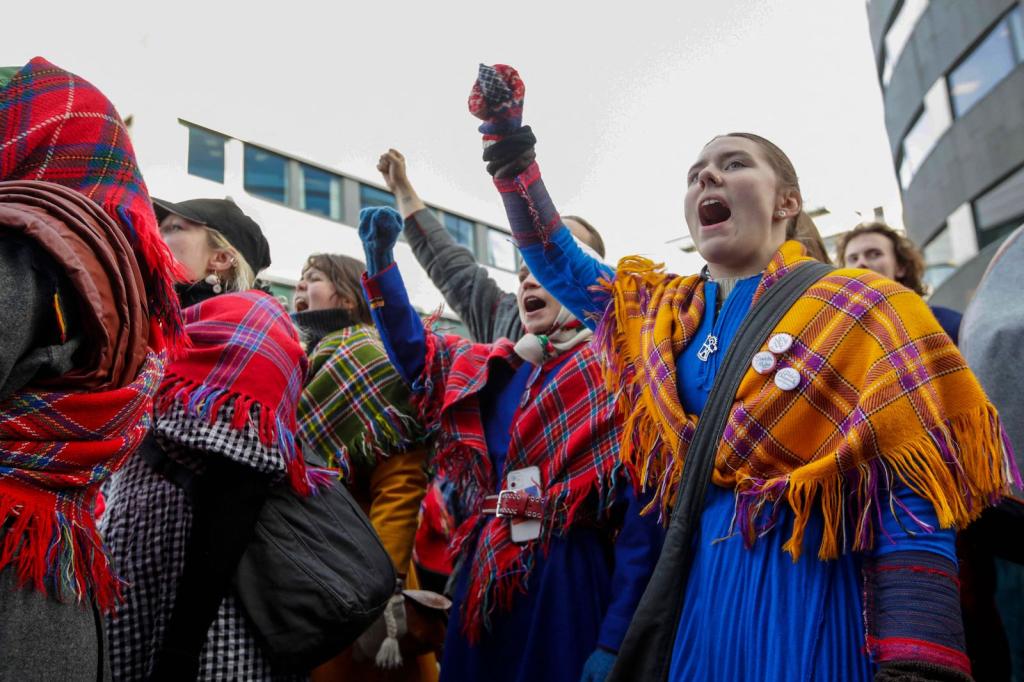 Protesters at World Bank meetings in IstanbulThis week’s World Bank and International Monetary Fund annual meetings brought bedlam to the streets of Istanbul, with Turkish socialist groups and trade unions protesting the mere presence of the two institutions and Turkish police in riot gear responding with tear gas.
Protesters at World Bank meetings in IstanbulThis week’s World Bank and International Monetary Fund annual meetings brought bedlam to the streets of Istanbul, with Turkish socialist groups and trade unions protesting the mere presence of the two institutions and Turkish police in riot gear responding with tear gas.
The ongoing global economic crisis dominated the proceedings in Istanbul. But with the Copenhagen climate talks just two months away climate activists made an effort to get one issue that has been bubbling for years onto the agenda — much to the dismay of World Bank staffers.
At a press conference, Greenpeace and the World Wildlife Federation in Turkey noted that the World Bank continues to invest far more in fossil fuels than in renewable energy [PDF], pointing out that from 2007 to 2009 the Bank doled out, on average, three times more public money for climate destroying fossil fuel investments than for environmentally sustainable, climate smart renewables.
As they spoke, a handful of World Bank staffers attempted to sabotage the message. Jamal Saghir, the Bank’s Director for Energy, Transport, and Water, was on his feet interrupting the speakers and disavowing the veracity of their investment figures, while other World Bank spinmeisters handed out press releases touting the Bank’s clean energy numbers. I’ve been to quite a few of these public bank events in the past, but have never witnessed this kind of flak attack before. Notably, NGOs are not allowed into World Bank convened press conferences during the meetings.
The reaction by World Bank staff can be easily explained. The Bank is — after all these years — doing well on clean energy. In fact, the numbers presented by Greenpeace and WWF Turkey show that in 2009, for the first time, World Bank Group lending provided more overall clean energy loans than dirty energy loans. More than $3 billion went to energy efficiency and renewables projects, compared to $1.9 billion for fossil fuels.
However, when you take the energy efficiency projects, the so-called low-hanging fruit, out of the equation, you’re left with a disturbing fact: for the fiscal years ending in June 2009, the Bank’s lending for actual power generation still favored fossil fuels over renewables ($1.9 billion versus $1.4 billion).
The World Bank remains heavily in denial about the coal, oil, and gas projects it continues to subsidize with low interest loans in the developing world, most often with devastating social, economic, and climate effects. Last year, for instance, the huge 4,000 megawatt coal-fired Ultra Mega Power Project (UMPP) in Gujarat, India got $450 million from the Bank despite threadbare justifications and massive solar potential in the region. One World Bank press conference attendee acknowledged, in an email, that World Bank fossil fuel lending in 2007-2009 outstripped fossil fuel lending in 2006-2008 by 8.5 percent.
If statements by World Bank president Robert Zoellick are any indication, fossil fuel projects are still very much on the Bank’s radar. Speaking at a town hall meeting in Istanbul, Zoellick declared developing countries “full partners” in the new, crisis-aware World Bank. The following morning he fleshed out this new equilibrium, saying that coal must be part of the developing world’s energy solutions.
Similar clear sentiments have been heard from the Bank’s head of environment, who described how the Bank is being “led” by developing countries to do more fossil fuel projects. This comment prompted Johann Frijns, of BankTrack and long-time World Bank watcher, to remark how these would be the same developing countries that “led” the Bank to inflict structural adjustment policies on them in the 80s and 90s.
The abiding sense is that while the World Bank is not entirely comfortable with its fossil fuel dealings, it’s not entirely uncomfortable either. The good news is that the Bank is recruiting for a “renewables specialist,” someone who can drive a culture change within the institution. The International Finance Corporation (IFC), the private lending arm of the World Bank, currently has two renewables specialists on staff. The IFC is responsible for a significant portion of energy lending and has funded major controversial projects such as the $4 billion Baku-Tbilisi-Ceyhan pipepline, a project whose pro-development billing has been found seriously wanting.
Pressure from shareholders may be the best hope for changing the World Bank’s lending policies. As the biggest donor, the U.S. government has the loudest voice on the World Bank board, and it is already making noises.
U.S. Congressman Barney Frank (D-Mass.), chairman of the House Financial Services Committee, has said that if the Bank wants a significant replenishment of funds it will have to improve its governance, transparency, and ease off on the promotion of anti-worker practices. The Obama administration talked about killing fossil fuels subsidies once and for all in the lead up to last month’s Pittsburgh G20 Summit, and some positive, albeit vague, language emerged about phasing out “inefficient fossil fuel subsidies that encourage wasteful consumption.”
Environmental NGOs around the world are united on the issue, and find it hard to fathom why developing countries should be burdened — via the World Bank and other similar public mutilateral banks — with the worst of climate destroying technology rather than the best of renewable energy.
The World Bank has its sights set on administering the post-Copenhagen climate financing funds. But its intensely mixed investment record ought to ensure that world leaders, especially those in developing countries, will bar the World Bank from taking control of that massive global lending program.


